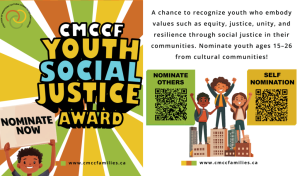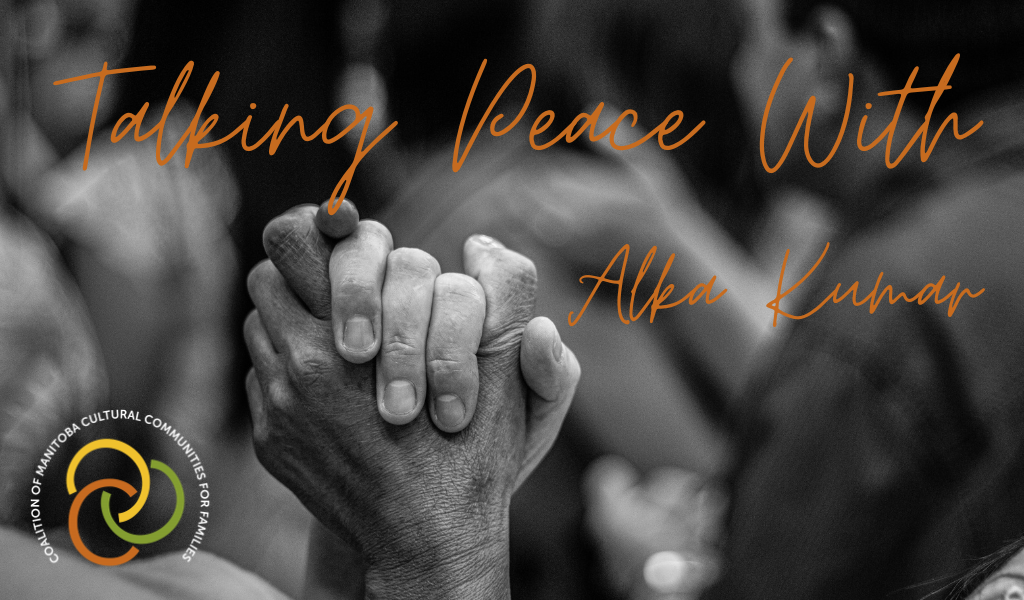
Dear readers, friends, and all our Coalition partners and allies…
Needing hope today
I don’t know about you, but I feel an urgent need these days to hear good news stories as they help me see the humanity in people; for example, neighbours shovelling each other’s driveways, and strangers helping dig out cars buried in the snow. They give me a chance to think of positives that shape our world rather than the overwhelming negatives we receive in our everyday news; and fortunately, this helps kindle some hope instead of making me fall into complete despair. I recently came across Fix The News, an independent, subscriber-supported publication that shares a weekly round-up of stories of progress from around the world, summarising and sharing them through an email newsletter. They have a podcast too, called Hope Is A Verb, where people doing extraordinary things to make the world a better place are interviewed.
From COVID-19: CMCCF and our Wisdom of Hardship (WOH) Circle
Speaking of hope, one of the CMCCF projects that was initiated during COVID-19 was Wisdom of Hardship (WOH), and, starting in 2021, through this talk-circle some of us would gather virtually on a monthly basis, sharing our fears and our disbelief at the disruption of our lives that the pandemic had triggered, and the collective loneliness we were all suddenly feeling. In these Wisdom Circles, we also reiterated our renewed need for friendship and community, sharing with each other our hopes for a better tomorrow when the pandemic would become a scourge in the past.
This WOH Circle also became a digital space on the CMCCF website where we documented the global stories we gathered-of challenging hardships individuals had endured- but more importantly, how these individuals had navigated these adverse conditions, and how they succeeded, emerging stronger, more resilient. We learned many lessons: for instance, what were their strategies, and how did they find the support/s that they believe helped save their lives; how could the stories of these `inspirators’ inspire and lead us out of the darkness?
The WOH Circle: Struggling together is about finding a support-system
Finally, what was it that we, as a group and as a community, found beneficial in our participation in these Wisdom Circles? We found that in difficult times when we struggle alone, it feels heavy and stressful; and when we reach out to one another and walk together, we find courage and resilience. Not only do we learn from each other, about how to make sense of shared challenges and modes of resistance, we also partake of each other’s spirit, lessening the load each person carries alone as our energies multiply.
We also found that expressing ourselves in a space that felt safe and supportive- even venting our worst fears and feelings- and putting them into words, sharing them in our strong voices, was comforting. Besides, the act of externalizing our emotions and thoughts in a group setting was cathartic, and it made us feel somehow in more control. Collectively, we felt we had agency, we could stand up to our circumstances, resist processes of bullying, aggression, and marginalisation. It was a kind of action and advocacy, and this in turn showed us a pathway that could lead more easily to hope.
Wisdom of Hardship (WOH) becomes Wisdom of Hope (WOH 2.0)
It so happened that as we left COVID-19 times behind us, WOH transitioned to WOH 2.0, as Wisdom of Hope (hope stepping out of the darkness of hardship).
We still continue with these monthly meetings, always happy to invite strangers and yet-to-be friends into our circle of friendship, and our conversations are both a way to delve deep into our emotions and the dilemmas we’re experiencing. Participation in these Wisdom Circles also helps us to find the positive power of hope and community as a way to recharge, reminding ourselves and each other that we are never alone. What’s more, anybody can join these conversations, and become a part of these relationships and friendships. Members of this group live not only in Manitoba but in other parts of Canada too, and beyond- and our members join this virtual circle from across the world and in multiple time zones, more specifically, from Austria, Hong Kong, UK, different parts of the United States, Brazil, and Ukraine. These are the regular participants, and there are several other individuals who join the circle as and when they are able.
All you need to do is reach out, send us an email expressing your interest, and we will invite you to join our next Wisdom of Hope Circle.
A recap of our Feb 15 Wisdom of Hope Circle
Finally, to make what I say above more concrete, I share with you some highlights from our most recent Wisdom of Hope Circle, held on February 15. Why do I want to do this? Firstly, it will give you a better understanding of how these Wisdom Circles work, what actually happens when we are all together, inside them; and maybe you will see why we find them so powerful and so valuable. I also want to give you this sneak preview because I believe our recent discussion aligned well with the peacebuilding theme that is our focus in the current CMCCF Building Bridges project.
As usual, we had gathered virtually on zoom on a Saturday morning to talk about peace and safety in our communities and in our lives, and also the role hope could play to help us move closer to those goals; but really, we wanted to begin by digging into what the `experiencing’ of peace and safety looked and felt like for each individual in our group that morning. We wanted to ensure that respectful space be created for each of us to express freely and authentically our unique perspectives on these topics; and that each person’s sharing come from genuine curiosity and respect about another person’s lived experience; and also setting the context for their own perspective.
Unique `lived experience’ perspectives on peace, safety and hope
For example, it was important for some individuals to begin by acknowledging that the current lived reality of an individual in Ukraine cannot be comparable to another experiencing their life in Canada. The understandings (and expectations) these two individuals have when it comes to peace and safety would also come from very different contexts- and the very meaning of these words would change based on these differences. It is perhaps the gap between making a philosophical and idealistic statement like ‘Be the peace you want to see in the world’ and peace becoming real in a war zone where bombs explode continuously; where peace may only be attainable through an `action’ that ends the war, or through the implementation of a `just’ peace deal. (Even so, what of the devastation and displacement of lives, and trauma caused by losing loved ones-all actions perpetrated through the act of war? Can the potential of peace be truly realised in such circumstances)?
Where can we find Hope?
Each person in the group shared their unique context and perspective about peace and safety, based on where they were geographically situated in the world and in their personal lives. We also reflected on `where we find hope.’ For some it meant action that comes after, through bringing all people to safety. For others, hope was a beginning that emerged with people standing up together- in solidarity-against powerful forces. There were many responses as there cannot be one correct answer in such circumstances. Some needed inner peace to be able to move towards hope; others needed discomfort to move towards action, which may eventually lead to hope.
Reaching across the aisle, especially, building solidarity with those in the middle, and working through mutual understanding, compassion and empathy, were other suggestions. We shared how easy it was for many of us these days to swing between helplessness and hope; and yet when we look at many of these issues from a lens of responsibility, we find how important it is to stand up for each other. In fact, the only way to move towards action is through hope as these are also small steps towards finding answers in the future. Viewed in this way, hope is about `collective action,’ and as Helen Phillips describes it in her novel Hum, hope is about “being aligned with others in her community, doing what each of us can do.”
One of our Circle members thoughtfully summarised the session for friends who were not able to attend, and I share these words below:
‘In the midst of so many global life-threatening threats and existential upheavals, we had a safe space to be fully heard and share real-life experiences and reflections from different parts of the world. The listening and appreciation were deep, intense, loving and empathetic, with a focus on exploring and amplifying authentic peace and hope – in ourselves, each other and out in the world. With more questions than answers, there were also wise lessons-learned from people who’ve actually survived such direct threats.’
The question we posed for others to continue reflecting on, I also leave for you here:
What resonates for you about living in dangerous times and accessing peace, safety, and hope?
Friends, stay safe and make sure to keep others safe too. …
Until next time…
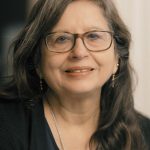
The views expressed in this blog post are mine, and I take full responsibility for them. We are always wanting to hear from you – please share your thoughts and feedback by completing our contact form here or by emailing hello@cmccfamilies.ca.
To learn more about our Building Bridges Project you can click: Here

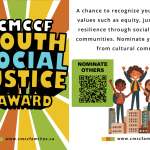 Previous Post
Previous Post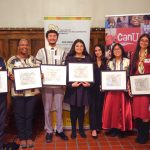 Next Post
Next Post
